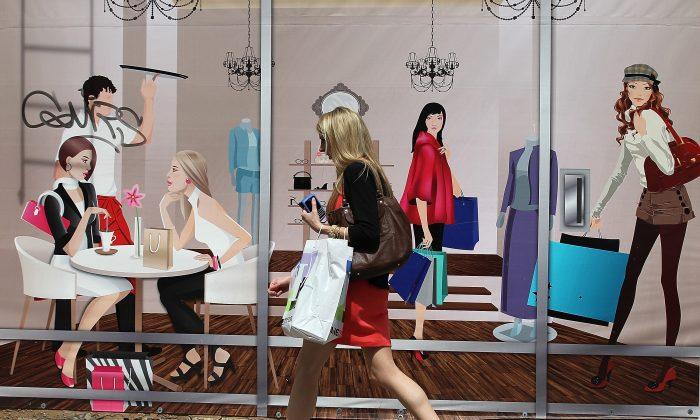Economists think retail spending is taking a backseat because of the weak economic recovery, higher payroll taxes, and slow improvement in the U.S. employment situation.
When reviewing economic statistics, it appears the U.S. economic recovery is gaining traction; however, the Bureau of Economic Analysis (BEA) revised its first quarter estimate several times.
For the first quarter of this year, the annual growth rate for real U.S. gross domestic product (GDP) was estimated at 2.5 percent. In BEA’s second estimate, it decreased to 2.4 percent, and the final figure was revised to figure was 1.1 percent, a 1.4 percent decrease from the original estimate.
The second quarter estimate started out at 1.7 percent and increased by 0.8 percent to an annual growth rate of 2.5 percent, according to the Aug. 29 BEA release. Remembering past revisions, market experts are not hopeful that the final second quarter numbers will increase; they may decrease.
The most recent growth rates are a mirage, say economists. They base their prognosis on BEA’s changing its method of calculating GDP in July. With that change, GDP for 2012 rose by $559 billion, according to a report from CounterPunch.
Article Continues after the discussion. Vote and comment
[tok id=8cca322fd5c97ada01967e017e34c3f8 partner=1966]CounterPunch said, “The US economy over the past year, July 2012 to July 2013, reveals a longer term trend of the US economy weakening, not growing—and that despite even the recent upward revisions of GDP on paper.”
Higher Payroll Taxes Affect Consumer Spending
“Personal consumption drives the American economy. Personal consumption historically represents 70% of our nation’s GDP,” according to a recent PolicyMic article.
GDP is affected by consumer spending. If consumers have more disposable income, their spending will go up. However, with payroll taxes going up, an improvement in GDP is another pipe dream.
In a January article, the Heritage Foundation points to 13 higher payroll taxes affecting contributions to GDP. For example, effective Jan. 1, the tax for Social Security increased from 4.2 percent to 6.2 percent, affecting all working Americans; the top marginal tax rate for single filers with incomes over $400,000 increased by 4.6 percent; and dividends and capital gains taxes increased by 5 percent on taxable income over $450,000.
“Each of these 13 tax increases will slow the economy, meaning that businesses will create fewer jobs,” the Heritage Foundation article states.
Employment Mirage
Another drag on the economic recovery is the real unemployment number, not the official number, which was 7.3 percent at the end of August, according to the Bureau of Labor Statistics (BLS).
Yet, the labor underutilization table, which includes people who have given up looking for work, is hidden from view, and can only be found if one digs deeper.
Very few among the U.S. press tell America that the total unemployment rate was 13.7 percent at the end of August. This number includes discouraged workers who are no longer looking for jobs. According to labor market experts, this unemployment number is an estimate, as it is almost impossible to go from door to door to count discouraged workers.
Actually, the employment participation rate, which shows the percentage of people who are employed, is a better measure. In August, this rate was at 63.2 percent.
There are still 7.9 million part-time workers, not because they want to work part-time, but because they can’t land a full-time job.
Furthermore, although 169,000 people landed a job in August, it is not known if these were job hoppers or the unemployed getting back into the workforce.
Additionally, the majority of jobs filled over the past months were not high- but low-level jobs. In August, retail trade added 44,000 jobs, ambulatory care services filled 27,000 out of 33,000 health care jobs, and food services and drinking places added 21,000 jobs.
The above job numbers do not bode well for retail. An unemployed person does not have the wherewithal to go shopping. It is a vicious cycle, as the consumer is the one who drives retail sales and with it the U.S. economy, according to retail market experts.
Retailers Feel the Pinch
Although retail sales improved by 3.3 percent during the week ending Sept. 7, ShopperTrak states that this is a short-term improvement, as consumers took advantage of sharply discounted summer merchandise and back-to-school items.
Shopper traffic in August—one of the most important shopping seasons because of back-to-school shopping—increased by 11 percent over July, but only 0.7 percent over August 2012.
Given that the Labor Day holiday and back-to-school shopping is over, “shopper traffic will decline to seasonal low levels for the remainder of September,” according to ShopperTrak.
The U.S. Census Bureau estimated in a September announcement that August retail sales increased by 0.2 percent from July and were up 4.7 percent from August 2012. July sales had increased by 0.4 percent over the prior month’s sales.
According to a recent National Retail Federation (NRF) report on August sales, sales of building materials and garden equipment decreased by 0.9 percent, while clothing and accessory sales declined by 0.8 percent, and general merchandise sales decreased by 0.2 percent.
The above numbers imply that consumer spending is slowing down, which does not look good for the job market. With sales going down, products stay on the shelves, and people will be laid off from their jobs.
Jack Kleinhenz, chief economist at NRF, said in the report: “Retail sales gains continue to be tepid. … The data suggests that consumers remain cautious with their pocketbooks and purchases. This month’s weak retail sales report will continue to put pressure on policymakers.





Friends Read Free